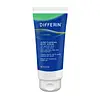What's inside
What's inside
 Key Ingredients
Key Ingredients

 Benefits
Benefits

 Concerns
Concerns

 Ingredients Side-by-side
Ingredients Side-by-side

Salicylic Acid
MaskingAcrylates Copolymer
Aloe Barbadensis Leaf Extract
EmollientButylene Glycol
HumectantButyrospermum Parkii Butter
Skin ConditioningCaprylic/Capric Triglyceride
MaskingCocamidopropyl Betaine
CleansingCoco-Betaine
CleansingCoconut Acid
CleansingDisodium EDTA
Parfum
MaskingGlycerin
HumectantGlycol Distearate
EmollientGlycolic Acid
BufferingHydroxypropyl Methylcellulose
Emulsion StabilisingKaolin
AbrasiveLaureth-4
EmulsifyingLauroyl/Myristoyl Methyl Glucamide
EmollientMannitol
HumectantMicrocrystalline Cellulose
AbsorbentOlive Oil PEG-8 Esters
EmollientParaffin
PerfumingPolyquaternium-39
Prunus Amygdalus Dulcis Oil
Skin ConditioningRetinyl Palmitate
Skin ConditioningSilica
AbrasiveSodium C14-16 Olefin Sulfonate
CleansingSodium Chloride
MaskingSodium Hydroxide
BufferingSodium Sulfate
Theobroma Cacao Seed Butter
EmollientTocopheryl Acetate
AntioxidantUltramarines
Water
Skin ConditioningSalicylic Acid, Acrylates Copolymer, Aloe Barbadensis Leaf Extract, Butylene Glycol, Butyrospermum Parkii Butter, Caprylic/Capric Triglyceride, Cocamidopropyl Betaine, Coco-Betaine, Coconut Acid, Disodium EDTA, Parfum, Glycerin, Glycol Distearate, Glycolic Acid, Hydroxypropyl Methylcellulose, Kaolin, Laureth-4, Lauroyl/Myristoyl Methyl Glucamide, Mannitol, Microcrystalline Cellulose, Olive Oil PEG-8 Esters, Paraffin, Polyquaternium-39, Prunus Amygdalus Dulcis Oil, Retinyl Palmitate, Silica, Sodium C14-16 Olefin Sulfonate, Sodium Chloride, Sodium Hydroxide, Sodium Sulfate, Theobroma Cacao Seed Butter, Tocopheryl Acetate, Ultramarines, Water
Ingredients Explained
These ingredients are found in both products.
Ingredients higher up in an ingredient list are typically present in a larger amount.
Butylene Glycol (or BG) is used within cosmetic products for a few different reasons:
Overall, Butylene Glycol is a safe and well-rounded ingredient that works well with other ingredients.
Though this ingredient works well with most skin types, some people with sensitive skin may experience a reaction such as allergic rashes, closed comedones, or itchiness.
Learn more about Butylene GlycolDisodium EDTA plays a role in making products more stable by aiding other preservatives.
It is a chelating agent, meaning it neutralizes metal ions that may be found in a product.
Disodium EDTA is a salt of edetic acid and is found to be safe in cosmetic ingredients.
Learn more about Disodium EDTAGlycolic Acid is arguably the most famous alpha hydroxy acid (AHA) with tons of research backing its benefits.
It is found naturally in sugar cane but the form used in skincare is usually synthetic for purity and stability.
Glycolic acid removes the top layer of dead skin cells to allow newer and fresher ones to emerge.
AHAs work by breaking down the structural “glue” that holds old skin cells in place. When that buildup is gone, your skin can renew itself more efficiently.
Research also shows glycolic acid stimulates collagen production, helping to firm and thicken the skin over time. This is one of its biggest advantages over other AHAs.
Overall, glycolic acid helps with:
Fun fact: Glycolic acid boosts skin hydration by helping it produce molecules that increase hyaluronic acid naturally.
To work best, glycolic acid products should have a pH between 3-4 (that’s where exfoliation is most effective but still gentle on skin).
The pH and concentration of a product are key to its effectiveness:
It is normal to feel a slight stinging sensation when using glycolic acid. This usually fades as your skin adjusts.
Because glycolic acid has the smallest molecular size in the AHA family, it can penetrate deeper, which enhances its effectiveness but also makes it more likely to irritate sensitive skin.
If your skin is very sensitive or prone to rosacea, glycolic acid may be too strong; in that case, try milder options like lactic acid or a PHA instead.
Recent studies suggest glycolic acid might even help protect against UV damage. But don’t skip sunscreen! Freshly exfoliated skin is more sensitive to the sun.
Glycolic acid is a skincare superstar. It smooths, brightens, hydrates, and firms the skin. Unless you’re highly sensitive, it’s well worth adding to your routine.
Read more about some other popular AHA's here:
Learn more about Glycolic AcidSalicylic Acid (also known as beta hydroxy acid or BHA) is a well-known ingredient for treating skin that struggles with acne and clogged pores. It exfoliates both the skin's surface and deep within the pores to help clear out buildup, control oil, and reduce inflammation.
Unlike AHAs (alpha hydroxy acids), salicylic acid is oil-soluble. This allows it to penetrate into pores which makes it especially effective for treating blackheads and preventing future breakouts.
Salicylic acid is also known for its soothing properties. It has a similar structure to aspirin and can calm inflamed or irritated skin, making it a good option for acne-prone skin that is also sensitive.
Concentrations of 0.5-2% are recognized by the U.S. FDA as an over-the-counter topical acne product.
It can cause irritation and/or dryness if one's skin already has a compromised moisture barrier, so it's best to focus on repairing that before introducing this ingredient into your routine.
While salicylic acid does not increase sun sensitivity, it’s still important to wear sunscreen daily to protect your skin.
If you are looking for the ingredient called BHA or Butylated Hydroxyanisole, click here.
Learn more about Salicylic AcidSodium Hydroxide is also known as lye or caustic soda. It is used to adjust the pH of products; many ingredients require a specific pH to be effective.
In small amounts, sodium hydroxide is considered safe to use. However, large amounts may cause chemical burns due to its high alkaline.
Your skin has a natural pH and acid mantle. This acid mantle helps prevent harmful bacteria from breaking through. The acid mantle also helps keep your skin hydrated.
"Alkaline" refers to a high pH level. A low pH level would be considered acidic.
Learn more about Sodium HydroxideWater. It's the most common cosmetic ingredient of all. You'll usually see it at the top of ingredient lists, meaning that it makes up the largest part of the product.
So why is it so popular? Water most often acts as a solvent - this means that it helps dissolve other ingredients into the formulation.
You'll also recognize water as that liquid we all need to stay alive. If you see this, drink a glass of water. Stay hydrated!
Learn more about Water